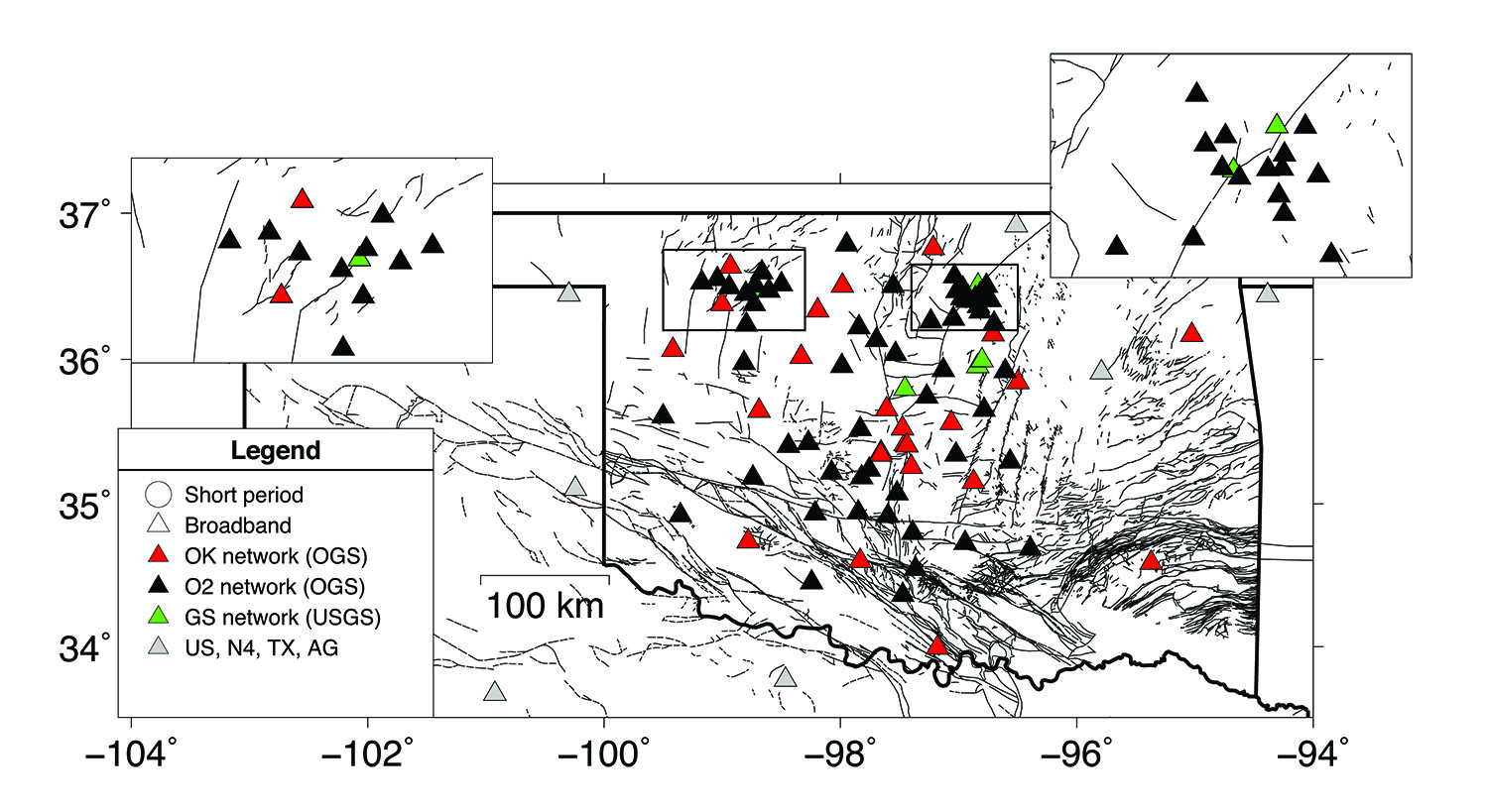The Oklahoma Geological Survey Statewide Seismic Network
by Jacob I. Walter, Paul Ogwari, Andrew Thiel, Fernando Ferrer, Isaac Woelfel, Jefferson C. Chang, Amberlee P. Darold, and Austin A. Holland
DOI: 10.1785/0220190211

ABSTRACT
The Oklahoma Geological Survey (OGS) monitors seismicity throughout the state of Oklahoma utilizing permanent and temporary seismometers installed by OGS and other agencies, while producing a real-time earthquake catalog. The OGS seismic network was recently added to the Advanced National Seismic System (ANSS) as a self-supporting regional seismic network, and earthquake locations and magnitudes are automatically reported through U.S. Geological Survey and are part of the ANSS Comprehensive Earthquake Catalog. In Oklahoma, before 2009, background seismicity rates were about 2 M 3.0+ earthquakes per year, which increased to 579 and 903 M 3.0+ earthquakes in 2014 and 2015, respectively. After seismicity peaked, the rate fell to 624, 304, and 194 M 3.0+ earthquakes in 2016, 2017, and 2018, respectively. The catalog is complete down to M 2.2 from mid-2014 to present, despite the significant workload for a primarily state-funded regional network. That astonishing uptick in seismicity has been largely attributed to wastewater injection practices. The OGS provides the Oklahoma Corporation Commission, the agency responsible for regulating oil and gas activities within the state, with technical guidance and earthquake products that inform their “traffic-light” mitigation protocol and other mitigating actions. We have initiated a citizen-scientist-driven, educational seismometer program by installing Raspberry Shake geophones throughout the state at local schools, museums, libraries, and state parks. The seismic hazard of the state portends a continued need for expansion and densification of seismic monitoring throughout Oklahoma.

Figure 3. Current OGS statewide network configuration, including stations operated by OGS (OK, O2) and stations operated by other
agencies that are utilized in real-time earthquake analysis.
Download the complete paper from Jacob I. Walter et al. and published in Seismological Research Letters.
From all of us at Raspberry Shake we would like to thank each of the authors of this paper.

